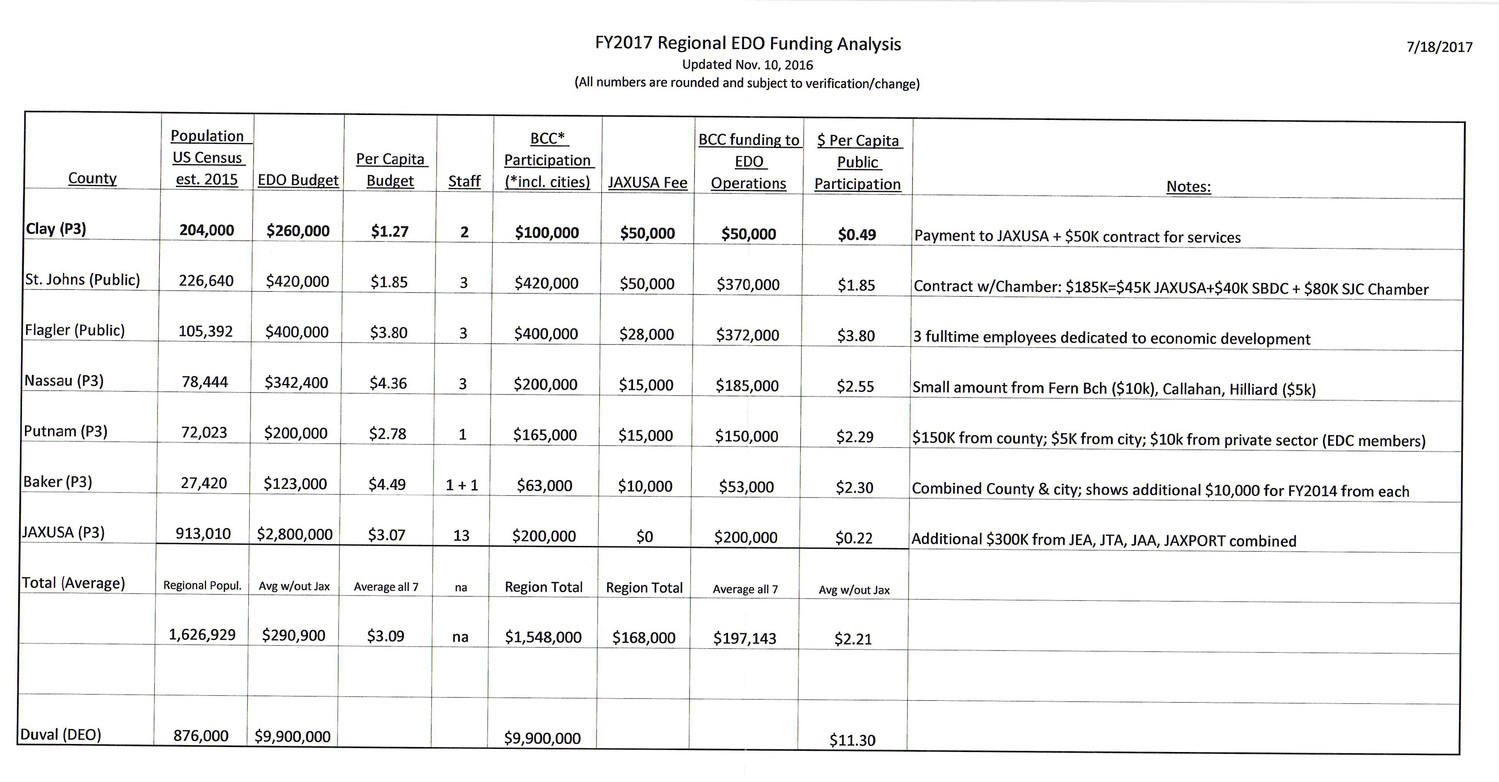Commission doubles funding for economic development
GREEN COVE SPRINGS – The Clay County Board of County Commissioners voted Oct. 10 to double its contribution to the Clay County Economic Development Corp.
The unanimous decision to double …
This item is available in full to subscribers.
Attention subscribers
To continue reading, you will need to either log in to your subscriber account, or purchase a new subscription.
If you are a current print subscriber, you can set up a free website account and connect your subscription to it by clicking here.
If you are a digital subscriber with an active, online-only subscription then you already have an account here. Just reset your password if you've not yet logged in to your account on this new site.
Otherwise, click here to view your options for subscribing.
Please log in to continueDon't have an ID?Print subscribersIf you're a print subscriber, but do not yet have an online account, click here to create one. Non-subscribersClick here to see your options for subscribing. Single day passYou also have the option of purchasing 24 hours of access, for $1.00. Click here to purchase a single day pass. |
Commission doubles funding for economic development
GREEN COVE SPRINGS – The Clay County Board of County Commissioners voted Oct. 10 to double its contribution to the Clay County Economic Development Corp.
The unanimous decision to double funding from $50,000 to $100,000 marks the largest budget increase to the organization since it formed in 2013.
The EDC board will use the funds to hire a new director for the organization, the county’s main economic development arm. The former director, Bill Garrison, stepped down in August to become director of the Northeast Florida Builder’s Association.
But is the increase enough? Depends on who you ask.
The commission currently spends $150,000 annually on economic development – including $50,000 in membership fees it pays to the regional economic development partnership JAXUSA. Overall, the county pays $1.38 per capita in economic development services, the lowest in Northeast Florida. The commission pays .04 percent of its budget to economic development in the region.
According to commissioners, there’s a few reasons for that.
First of all, the EDC is still a young organization. The EDC split off from the Clay County Chamber of Commerce in 2013 as a way to form an organization whose main mission would be to maximize the county’s benefit from the economic boom expected from the First Coast Expressway. The multi-lane toll road will link Duval County to St. Johns County and along the way will carve a path straight through Clay County.
It’s a chicken and egg situation, said Diane Hutchings, county commission vice chair.
“…Until you have the infrastructure, the transportation, you can’t have economic development,” Hutchings said. “We’re finally getting that $2 billion asset [the expressway] placed in our county…there’s a lot of things going on behind the scenes ahead of it coming.”
Hutchings said she would support an additional increase to the EDC if they could ramp up private sponsorships, which make the largest share of the EDC’s budget.
The problem is the private sponsorship has waned lately, according to Laura Pavlus, interim EDC executive director.
Another reason the EDC has seen such a slow ramp to the BCC’s contribution has to do with a general skepticism among both current and former commissioners about the actual economic benefits the organization provides.
“I’m not skeptical, I’m absolutely sure they haven’t [brought in new business], I know,” said former Commissioner Ronnie Robinson. “Show me something, a business you’ve enticed to come into Clay County, and I’ll gladly give you $50,000. But they can’t do that, because they haven’t brought any. There’s a lot of places $100,000 a year could be used. If they’re truly out there bringing businesses to Clay County, then that’s wonderful.”
In his tenure, Robinson was the EDC’s most vocal opponent. Discussions on budgetary increases have cooled somewhat since new blood came to the council after the 2016 election.
The idea of merit-based pay is appealing to current Chair Wayne Bolla.
The BCC’s contribution “depends on what they got done this year with what they have,” Bolla said. “It’s a performance thing.”
Overall, Bolla said he believes the BCC is in a good spot financially with its contributions to economic development currently – at least enough to entice a new “Superman” executive director to the organization.
If, however, they find the perfect candidate, he said he would entertain possibly contributing more money to the budget.
Bolla said the EDC is considering hiring a company to perform a national search for the new director.
“If you find Superman, send him our way,” Bolla said.
According to JAXUSA president Jerry Mallot, economic development funding in the area has remained largely flat in the last few years with only gradual and expected increases.
He said, however, that funding pushes for specific companies to move into the region such as Amazon in Duval County and the Calavo avocado packaging plant in Clay County remains plentiful.
Mallot admitted that underdeveloped areas begin at a disadvantage in these company tugs of war.
“Every county that wants the opportunity for growth has to be willing to invest,” Mallot said. “Rural counties are more difficult for several reasons. They have less infrastructure and less available buildings for companies to move into, and they are by definition not as close to some assets that a company might need. So, for that reason if a rural county does not choose to get involved, the likelihood of them being successful in building new jobs is significantly diminished.”
Although Clay County is no longer considered completed rural, the southern part of the county is less developed and isolated from any major highway.
As the benefits from the First Coast Expressway begin to reveal themselves, it will be up to economic development organizations such as the EDC to ensure that high-paying jobs move into the county.








